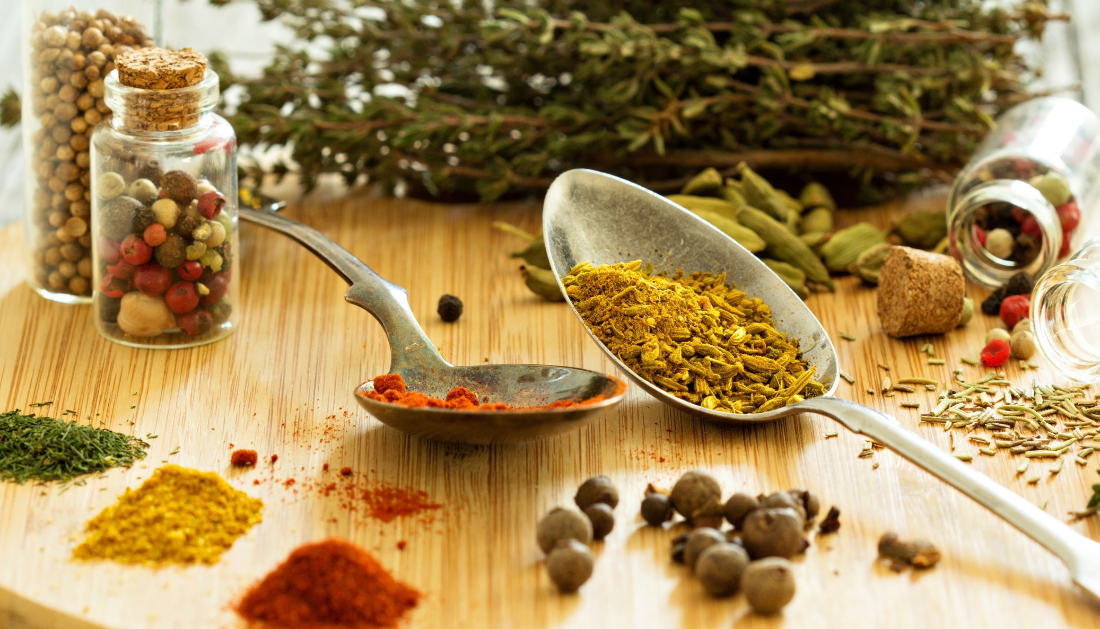

In a recent publication in the journal Nutrients, a team of researchers delved into the impact of regular intake of polyphenols from the diet on the composition of gut microbiota in healthy adults.
Background
Polyphenols, present in a wide array of foods and beverages, are phytochemicals renowned for their potential health benefits, including their influence on gut microbiota.
These compounds can affect health through direct effects on cells and by altering the composition of gut microbes, resulting in the production of bioactive metabolites that influence various physiological processes.
However, the precise effects of habitual consumption of polyphenols, particularly from everyday foods and culinary herbs and spices, on gut microbiota remain incompletely understood.
Studies suggest that polyphenols may enhance the presence of beneficial bacteria while reducing harmful ones, thereby contributing to improved gut health and potentially impacting broader health outcomes such as inflammation, oxidative stress, and cardiovascular health.
Further research is necessary to elucidate the effects of habitual polyphenol consumption on gut microbiota and its implications for human health.
About the study
The current study involved a secondary analysis of data from the International Cohort on Lifestyle Determinants of Health (INCLD Health), focusing on baseline data to investigate the association between dietary polyphenol intake and gut microbiome composition.
A subgroup of 96 participants was selected based on the completion of specific surveys and tests, excluding those with certain health conditions or recent antibiotic use.
Deoxyribonucleic acid (DNA) was isolated from fecal samples using a specialized kit and sequenced to identify microbial DNA. The sequencing targeted the V4 region of the 16S ribosomal ribonucleic acid (rRNA) gene, with subsequent analysis to identify and classify microbial taxa. The data underwent filtering and normalization to ensure reliability using an online platform designed for microbiome data analysis.
Polyphenol intake was quantified based on dietary data collected through a food frequency questionnaire, with a focus on identifying polyphenol content in various foods and beverages, excluding minimal polyphenol sources.
The assessment of polyphenol intake considered both total daily consumption and the frequency of herb and spice usage known for their high polyphenol content. This method allowed for a comprehensive analysis of polyphenol exposure from regular dietary habits.
Statistical analysis explored the diversity of gut microbiota and its relationship with polyphenol intake. This included examining differences in microbial diversity and abundance across varying levels of polyphenol consumption.
Study results The study analyzed the characteristics and dietary habits of 96 participants, predominantly Caucasian, non-Hispanic women with normal cardiometabolic measures. The majority were non-smokers and consumed alcohol moderately.
Dietary polyphenol consumption varied, with flavonoids being the most commonly consumed class. Frequently used herbs and spices included black pepper, cinnamon, ginger, onion, garlic, and turmeric, each with varying polyphenol content.
Analysis of microbial communities, stratified by polyphenol consumption, revealed Firmicutes as the dominant phylum across all groups, with no significant differences in microbial diversity or community structure observed between low, medium, and high polyphenol consumers.
However, the abundance of specific microbial taxa varied with levels of dietary polyphenol intake. Higher polyphenol consumption was associated with increased abundance of Lactobacillus and Sutterella, and decreased abundance of the Eubacterium ventriosum group, Ruminococcus torques group, Bacteroides, and Enterococcus.
Similarly, the frequency of herb and spice usage rich in polyphenols did not affect overall microbial diversity but influenced the abundance of specific taxa.
High-frequency users exhibited a distinct microbial profile compared to low-frequency users, with variations in the abundance of Lachnospiraceae UCG 004, Lachnotalea, and Lachnospiraceae UCG 001.
Correlation analyses identified significant relationships between total and specific classes of polyphenol consumption and microbial taxa. Abundance of Lactobacillus and Sutterella correlated positively with total polyphenol, flavonoid, and lignan consumption.
In contrast, abundance of Eubacterium ventriosum, Ruminococcus torques group, Bacteroides, and Enterococcus showed an inverse correlation with polyphenol intake.
Different classes of polyphenols also exhibited varied correlations with different microbial taxa, underscoring the intricate interplay between diet and gut microbiota.
Conclusions
The study investigated the association between dietary polyphenol intake and gut microbiota in healthy adults, focusing on the consumption of polyphenol-rich foods and herbs/spices.
The findings revealed specific patterns of gut microbial composition associated with levels of polyphenol consumption, indicating an increased abundance of beneficial microbes such as Lactobacillus and Sutterella with higher polyphenol intake.
Conversely, certain microbes exhibited an inverse relationship with polyphenol consumption, suggesting complex interactions between diet and gut health. The study also identified potential microbial markers for the use of polyphenol-rich herbs and spices.
These findings highlight the complex relationship between dietary polyphenols and gut microbiota, suggesting that polyphenols may influence gut health.
This underscores the promising role of dietary polyphenols in modulating gut health and emphasizes the need for further research to better understand these relationships.
For more information: Relationships between Habitual Polyphenol Consumption and Gut Microbiota in the INCLD Health Cohort, Nutrients, https://doi.org/10.3390/nu16060773
more recommended stories
 Osteoarthritis Genetics Study Uncovers New Treatment Hope
Osteoarthritis Genetics Study Uncovers New Treatment HopeOsteoarthritis- the world’s leading cause of.
 Antibody Breakthrough in Whooping Cough Vaccine
Antibody Breakthrough in Whooping Cough VaccineWhooping cough vaccine development is entering.
 Scientists Unveil Next-Gen Eye-Tracking with Unmatched Precision
Scientists Unveil Next-Gen Eye-Tracking with Unmatched PrecisionEye-tracking technology has long been a.
 Men5CV: Hope for Ending Africa’s Meningitis Epidemics
Men5CV: Hope for Ending Africa’s Meningitis EpidemicsA landmark global health study led.
 Stem Cell Therapy Shows 92% Success in Corneal Repair
Stem Cell Therapy Shows 92% Success in Corneal RepairA groundbreaking stem cell therapy known.
 Gene Therapy for Maple Syrup Urine Disease
Gene Therapy for Maple Syrup Urine DiseaseResearchers at UMass Chan Medical School.
 How Fast Are Your Organs Aging? Simple Blood Test May Tell
How Fast Are Your Organs Aging? Simple Blood Test May TellNew research from University College London.
 HEALEY Platform Accelerates ALS Therapy Research
HEALEY Platform Accelerates ALS Therapy ResearchA New Era of ALS Clinical.
 Low-Oxygen Therapy in a HypoxyStat Pill? Scientists Say It’s Possible
Low-Oxygen Therapy in a HypoxyStat Pill? Scientists Say It’s PossibleA New Approach to Oxygen Regulation-HypoxyStat.
 Early Alzheimer’s Diagnosis with Advanced Tau Test
Early Alzheimer’s Diagnosis with Advanced Tau TestA New Biomarker Test Promises Early.

Leave a Comment